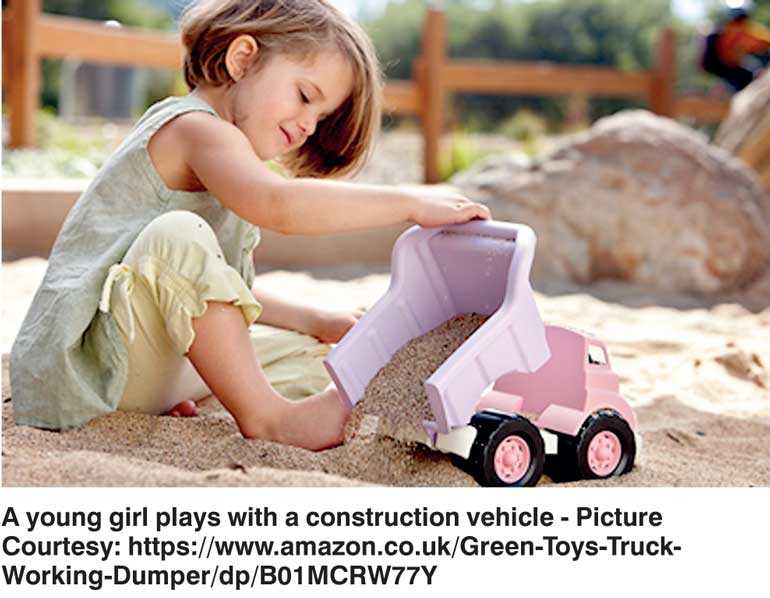Monday Dec 08, 2025
Monday Dec 08, 2025
Monday, 1 October 2018 00:00 - - {{hitsCtrl.values.hits}}

By Shari Jayawardhana
Toys are tools of early learning for children. It helps children learn about themselves and the society around them. More specifically, it teaches them about gender stereotypes that exist in our world.
A trip to the local toy store will reveal that cars, toy soldiers, construction sets, action figures and toy weapons are targeted towards boys while dolls, doll houses and kitchen sets are directed towards girls. Let’s take a closer look at these common ‘boys’ toys’ and ‘girls’ toys’ and examine what lessons are taught to the children about gender roles and what they internalise as reality.
‘Boys’ toys’ are dominated by power and battle. They teach children that to be a real boy, one should be naturally violent and aggressive. These toys also normalise violent behaviour in boys and carry the message that boys have to be competitive and strive to win the fight at all times. These toys also encourage boys to be ‘hands on’ and it communicates to them that in order to be a successful man, he has to be a hard worker by learning to fix and build things.
In contrast, the ‘girls’ toys’ teach children that young girls should be nurturing and caring. It teaches young girls to aspire to be good homemakers by doing the household chores such as cooking and cleaning. Furthermore, from an early age they are taught about what a beautiful woman should look like and are encouraged to aspire towards attaining an unrealistic body type and shape. These toys also communicate to children that in order to be successful women, girls should primarily focus on maintaining their external appearances such as makeup, hair and clothes and consider their primary role as homemakers.
It is clear that parents and other adults introduce social constructs of gender by stereotyping what toys are given to boys and girls. Therefore, it is important that children are allowed to explore their individual interests without pressuring the child to conform to rigid gender stereotypes that are present in our society. For example, adults should help little boys and girls to find their creative side by giving them craft toys and art supplies. This will encourage them to express their personality and strengthen their problem solving and critical thinking skills. Young girls and boys should also be encouraged to play with building blocks and construction kits to prevent them from believing that engineering, science and construction are just for boys.
Every child is unique and its interests varies. Adults should not try to steer children away from the toys they love. Instead, if children play with toys that are not ‘socially acceptable’ for their gender, it will serve them well in the future as it is a sign of independence. If the children are teased by others for their choice of play, parents and other adults should reassure the children and reinforce their confidence. If little boys are naturally inclined to play with kitchen sets and dolls, it should not be prohibited. For it is an opportunity for them to explore their nurturing side and connecting with others, thus building important life skills. In addition, if a young girl naturally likes to play with mechanic sets, construction sets and building blocks, parents should not suppress her personality by limiting her to just playing with dolls. The best toys, are those that encourage children to create, to be active, to imagine – they are not bound by gender.